Biographical Outline
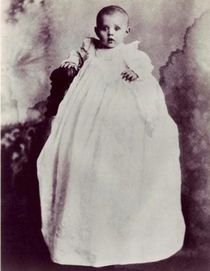
Early childhood
Irene Marie Dunn was born on December 20th, 1898 to Joseph John Dunn and his wife Adelaide Henriette Henry Dunn in Louisville, Kentucky. Irene's father was chief engineer on several steamboats and mother Adelaide an accomplished musician who early taught Irene the piano later on followed by singing lessons. Two years later the family was completed by Irene's brother Charles. Irene attended the Cedar Grove Academy, a convent school conducted by the Sisters of Loretto. In consequence of Joseph's appointment as inspector of steamboats for the United States Government, the family relocated to St. Louis.
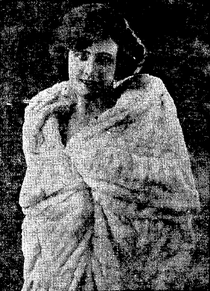
Youth and the theater years
In April 1913, Irene was fourteen, Joseph Dunn died of a kidney infection. Adelaide moved her family to Madison, Indiana, her hometown where her father Charles Henry, a builder of steamboat boilers, lived with his second wife. After spending her teenage years in this idyllic town, Irene graduated from the local high school in 1916 and moved on to music studies in Indianapolis. After two years she left the Indianpolis Conservatory of Music with a diploma and a teaching certificate. On her way to Gary, Ind. - her planned first appointment as teacher - she spotted an announcement for an audition for a scholarship at the prestigious Chicago College of Music in a newspaper. Irene won this scholarship and consequentely prepared for a career as singer. Her dreams about grand opera were shattered by a flunked audition for the Met the main reason being that she had too slight a voice. Recognizing her "limitations" Irene turned to musical comedy. In 1921, she managed to gain the female lead in one of the road tour companies of the Broadway hit "Irene." This engagement was the beginning of a theater career which lasted for about nine years and provided Irene with the necessary experience for the things to come in Hollywood. In her theater years, Irene added an "e" to her surname - the spelling we are used to.

Marriage
Probably in 1924, Irene met future husband Francis Dennis Griffin on a supper dance. It followed a rather turbulent courtship - according to Irene "Frank hated having me in the theatre. Our battles raged furiously." In spite of all that, the couple married in July 1927. It may be that Irene considered leaving the theater and to lead the life of a successful dentist's wife at that time - something she told in later years - but the fact remains that she worked on Broadway again as early as January 1928.
Husband Frank not only adjusted himself to the situation but became an avid supporter of his wife, assumedly one reason why the Griffins managed a happy marriage that lasted till Frank's death in October 1965.
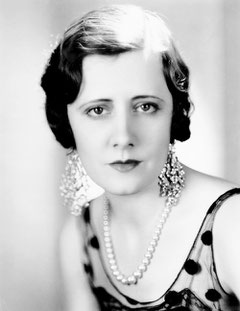
Hollywood
The pinnacle of Irene's theater career, the road tour of "Show Boat" 1929/30 which Irene graced with an acclaimed performance of Magnolia, turned out to be her catapult for Hollywood. "Discovered" by talent scouts, she signed a contract with RKO which from the very start secured her not only a considerable salary but the status of a leading lady. However, her first film "Leathernecking"(1930) was not much of a success. RKO hired Irene as comedy musical star but the fad of music films accompanying the invention of the talkies was already over when "Leathernecking" was released. Not the person to accept defeat, Irene campaigned for the dramatic part, the "emotional plum of the year" at RKO, the female lead in the filming of Edna Ferber's "Cimarron"(1931).
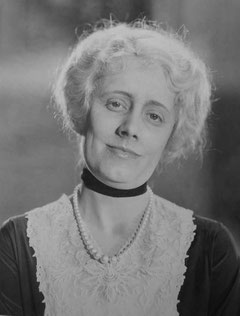
Convincing the studio bosses with her screen tests and the exceptional way how she handled the aging process of Sabra, Irene won the coveted role. Costarred with Richard Dix her characterization gathered Irene her first Academy Award nomination as Best Actress. Thus established as "serious" actress, Irene worked in a quick succession of films. The first time that she sang on-screen again was in a loan-out to MGM, "The Great Lover"(1931). It took her home studio, RKO, another three years to really take advantage of her singing abilities in "Stingaree"(1934).
Although nowadays mainly known for her comedies, in this phase Irene Dunne was highly successful in a total other genre - the so-called "weepy." A typical representative and at the same time a milestone of Irene's career is "Back Street"(1932) that earned Universal an outstanding financial profit.
Versatile switching between genres, Irene Dunne lightly touched comedy in those first years ("This Man Is Mine"(1934) and "Show Boat"(1936), for instance) but never filmed a full-fledged comedy.
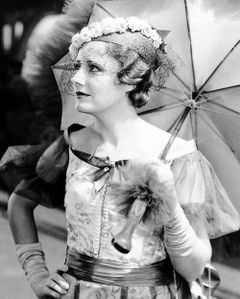
Irene's contract with RKO lasted for five years and ended with "Roberta"(1935), Irene's 18th film out of a total of 41 pictures. Taking a rather pioneering step, Irene decided on a career as free-lanced actress only working under short-term contracts for a variety of studios. Whereas she lost the security of a long-term obligation, she gained more influence on her career and the freedom to film less than in the previous years, amounting to an output of no more than two films per year.
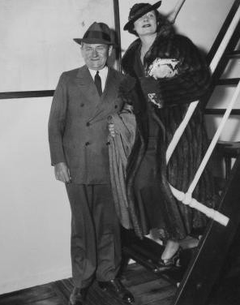
The year 1936 - a lot of changes
In the period from 1930 till 1936, Miss Dunne not only juggled a fast developing Hollywood career but a bi-coastal marriage. The Griffins - under the impression that the Hollywood enterprise probably wouldn't be a long one - had decided not to move completely to "Tinseltown." Instead Frank went on with his dental practice, Irene filmed one film after another in Hollywood, and the telephone company had a heyday. Of course, the couple visited each other as often as possible; Irene even had the contractual claim to leave for New York after finishing a film. Though Mr. and Mrs. Griffin tried to make the best out of the situation, the gossipy Hollywood press was suspicious and repeatedly circulated rumors about a pending divorce. Anyhow, the year 1936 brought a change of this status.
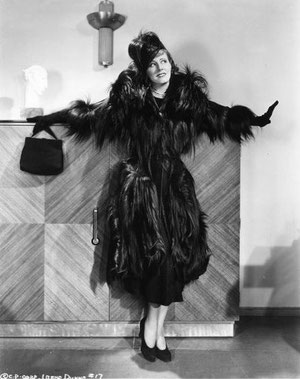
After building a house - the Holmby Hills residence, Irene's home for the rest of her life - Frank ultimately joined his wife in Hollywood. Leaving the dentristy behind him, he started a successful business career and worked in different branches of business. In autumn/early winter this year the family was completed by a little girl, Mary Frances, whose adoption became legally final in March 1938.
But the year 1936 did not only bring important changes in Irene's private life but marks her first excursion into comedy. Though Irene was rather hesitating about this change of path, "Theodora Goes Wild"(1936) proved to be a great success, and secured Miss Dunne her second Academy Award nomination.
As "Cimarron" did put Irene on the map as serious actress, "Theodora Goes Wild" put her on the map as comedienne.
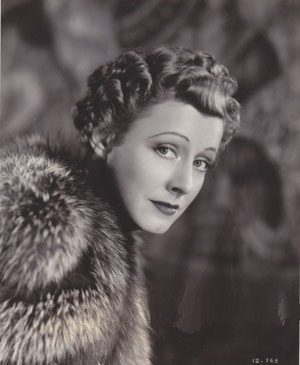
More years in front of the camera
In the next years this reputation was expanded by such films as "The Awful Truth"(1937) - first co-work with Cary Grant and third Oscar nomination for Irene - "The Joy Of Living"(1938) and "My Favorite Wife"(1940). The 30s which Irene started with a musical comedy ended on a more dramatic note with "Love Affair"(1939) - Irene's favorite film, her first teaming with Charles Boyer and worthwhile the fourth Academy Award nomination for Miss Dunne.
In the early 40s Irene Dunne occupied one of the top spots of Hollywood earners hereby reflecting her position in the film industry.
Still obliged to versatility, Irene varied the film genres - madcap comedy like "Lady In A Jam"(1942) was followed by the wartime fantasy drama "A Guy Named Joe"(1943); the heavy dramatics of "The White Cliffs Of Dover"(1944) contrasted by the light touch of "Together Again"(1944).

Despite a press anouncement in the mid40s, Irene regrettably never came around to filming another musical but sang occasionally on-screen. Her last films, starting with "Life With Father"(1946) are characterized by a high suitability for families presumedly due to the fact that Irene was dealing with a teenage daughter at home. The highlight of this last period of Irene's film career is "I Remember Mama"(1948) which bestowed on Irene the only character role she ever played (according to La Dunne herself) and yet again an Academy Award nomination. But even the fifth time, Irene didn't take the statuette home (this honor went to Jane Wyman for "Johnny Belinda").
In 1952, Irene's last feature film "It Grows On Trees" was released, and then the process began which Irene later on described as "I drifted out of acting..." She showed occasionally up on the TV screen to still have a hand in business but never filmed for the big screen again.
Irene in different TV productions: "Touch of Spring"(1955), "The Opening Door"(1959) and the last time that she worked in front of a camera "Source of Information"(1962)
"...I found I didn't have to act to be happy"
Irene always had been accessible for charity matters, but showed an increasing leaning towards civil causes starting with the 40s. Rooted in her Catholic faith and being a devout Republican she got involved in a broad range of activities. The diversity of her commitments is impressively mirrored by the list of awards and honors Irene was presented with through the years. One of her favorite charities was the work for St. John's Hospital where her legacy is still alive in the Irene Dunne Guild.
In 1957, Irene Dunne was honored by an appointment as alternate delegate to the United Nations - not only another premiere for Miss Dunne but the first time that the U.S. delegation included a member of the entertainment world.
Working for the TV again in 1959, Irene came to the conclusion:"But my other activities demand so much time I can't really give much thought to concentrating on acting."
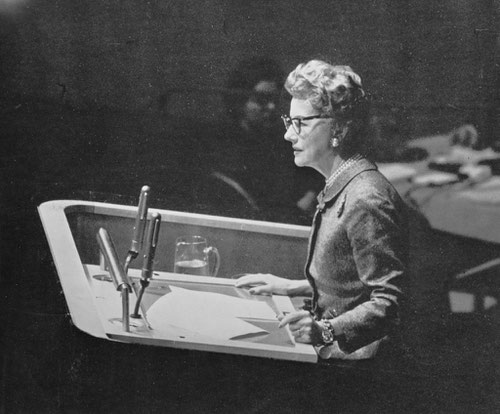
Instead she concentrated on her new field of work, her family - enriched by the birth of two grandchildren in the late 50s - and the occupations she and Frank always liked doing together.
Not much of partygoers, the Griffins preferred a quiet very private life. They loved traveling, reading, going for walks, meeting friends, were both avid golf players, and enjoyed the theater and Irene's beloved music of course.
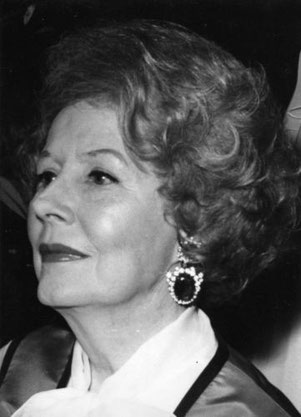
After Frank died in October 1965, Irene took over his business affairs supported by her brother Charles, and moved the office to her Holmby Hills home. During the governance of Ronald Reagan she added the work for the Commission of Art to her list of activities.
The extensive interviews Irene gave in the 70s - despite her reluctance - prove that she was still going strong wasn't "a little lady living in her past," and simply had found "that she didn't have to act to be happy."
Of course as the years went by, Irene wasn't in the public interest anymore as she used to be, but this certainly had a couple of advantages which Irene appreciated:
" Years ago the public used to hound me but now I can go shopping in peace."
In 1985, in the advanced age of 87, she made her last public appearance to accept the Kennedy Center Honors - an honor given to the recipients for lifetime contributions to American culture through the performing arts - in Washington. But at last Irene's health failed her; she couldn't participate in the concluding gala and was taken to Georgetown hospital.
Irene Dunne died peacefully at her Holmby Hills home on September 4th 1990.
 The Irene Dunne Site
The Irene Dunne Site


